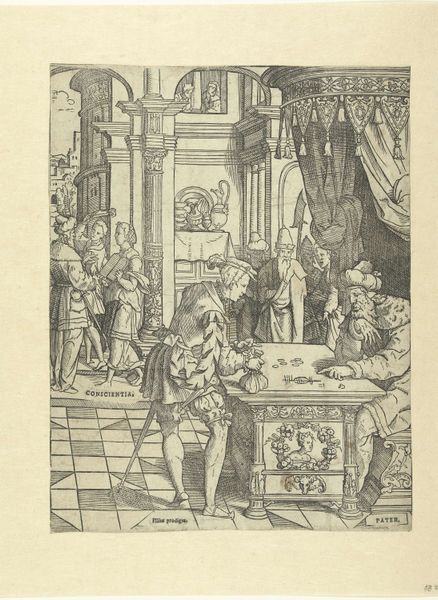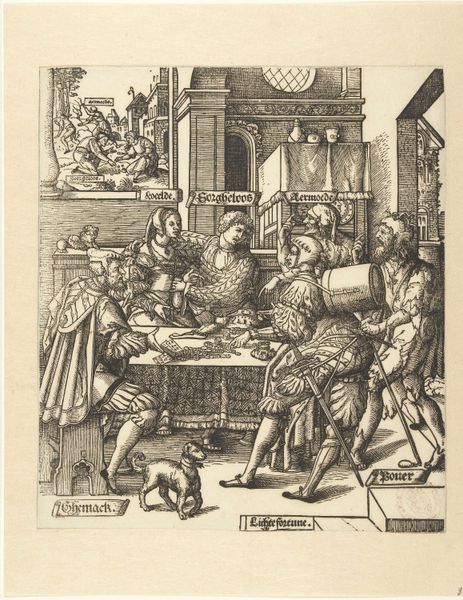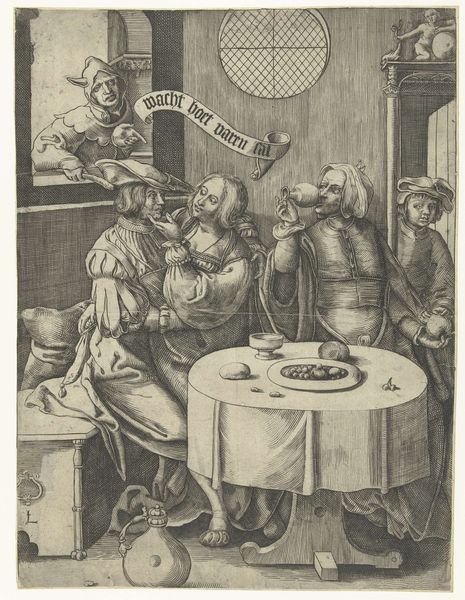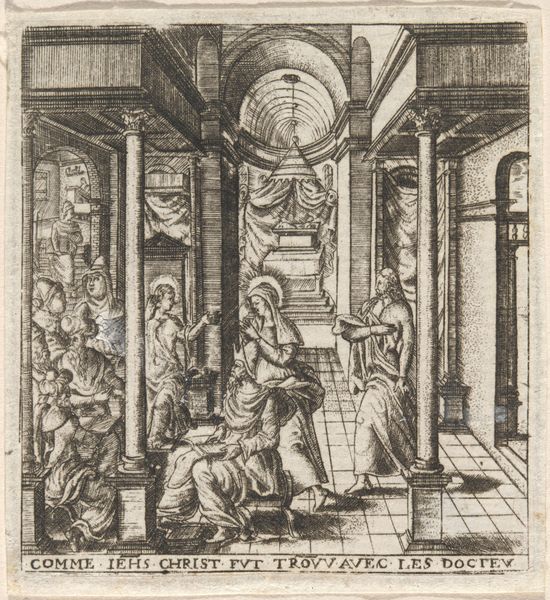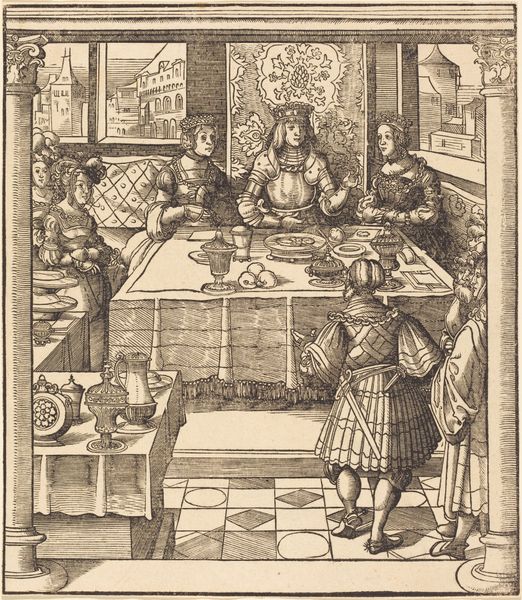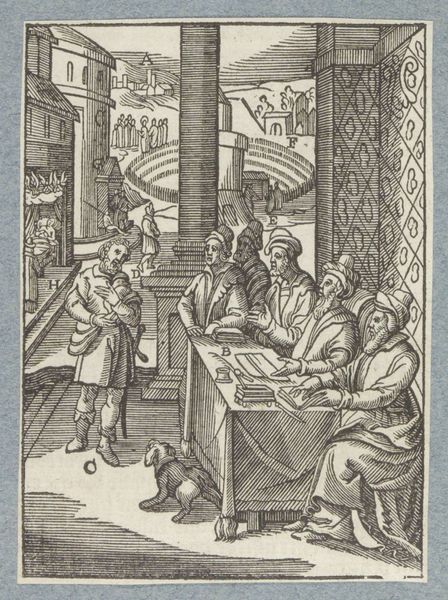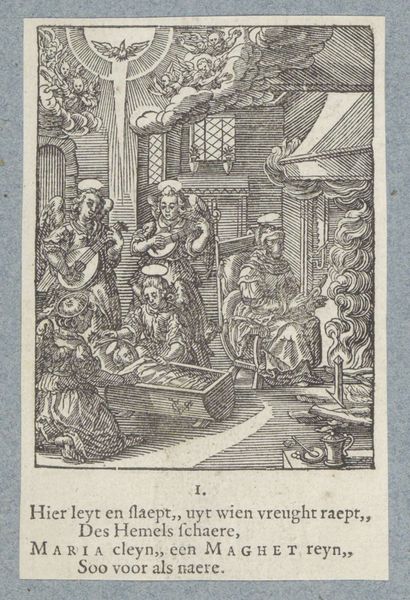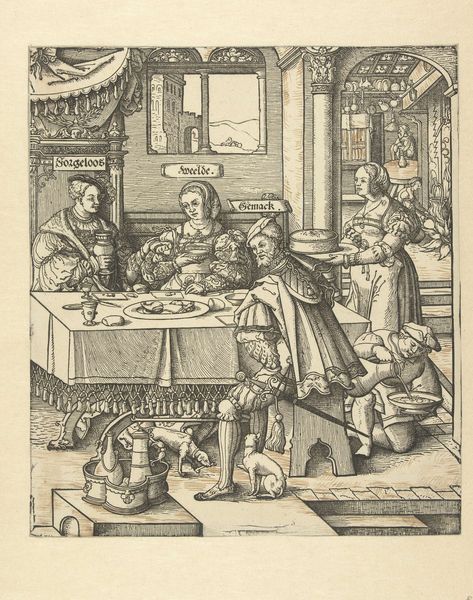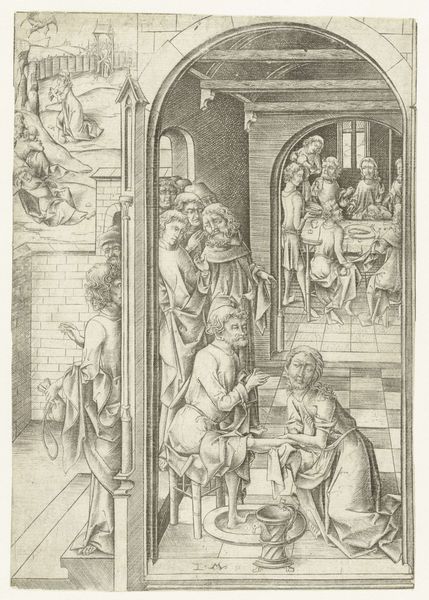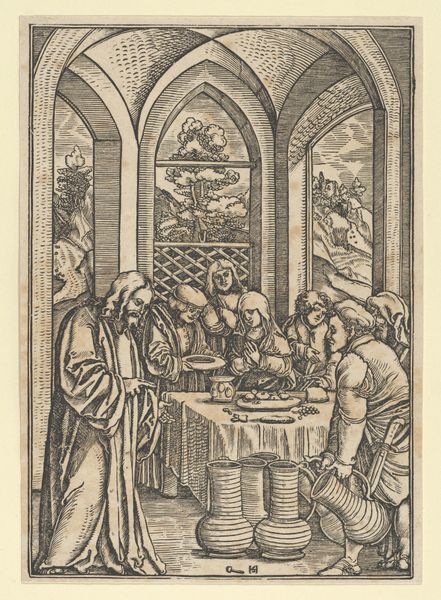
drawing, print, ink, pen, engraving
#
drawing
#
narrative-art
#
pen drawing
# print
#
pen illustration
#
pen sketch
#
figuration
#
ink
#
pen
#
genre-painting
#
history-painting
#
northern-renaissance
#
engraving
Dimensions: height 325 mm, width 239 mm
Copyright: Rijks Museum: Open Domain
Jan Swart van Groningen made this engraving, "The rich man and Lazarus," sometime in the first half of the 16th century. Engraving is an intaglio process, meaning that the image is incised into a metal plate, in this case most likely copper. The lines are cut with a tool called a burin, which requires considerable skill. Ink is then applied to the plate and carefully wiped off the surface, leaving it only in the engraved lines. Finally, the plate is pressed against a sheet of paper, transferring the image. The resulting print is a testament to the engraver's technical prowess and artistry, but it is also a social document, of sorts. By its very nature, the print is a multiple. It can be circulated widely, and is therefore perfectly suited to the dissemination of moralizing narratives like this one. Swart van Groningen's choice of this medium suggests that he intended the image to reach a broad audience, prompting reflection on the themes of wealth, poverty, and divine justice.
Comments
No comments
Be the first to comment and join the conversation on the ultimate creative platform.

